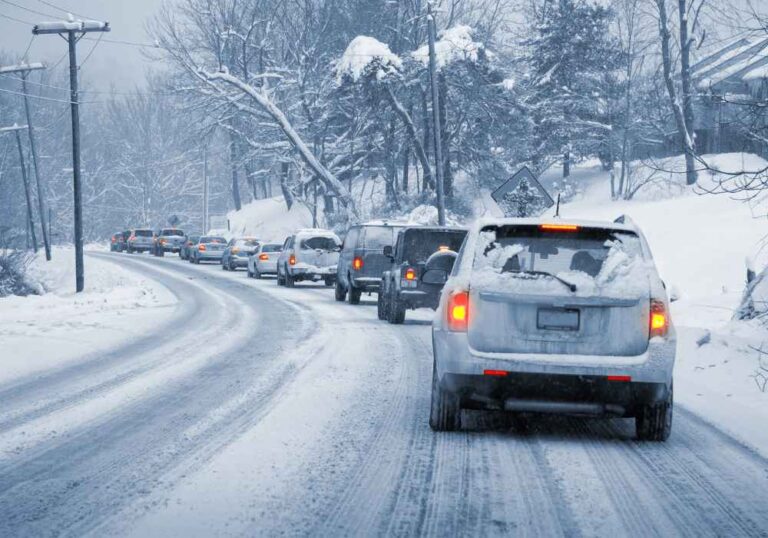Introduction
As the winter season approaches, it brings with it colder temperatures, icy roads, and challenging driving conditions. Ensuring your vehicle is ready for winter driving is essential for your safety and the safety of others on the road. Proper preparation can help you avoid breakdowns, accidents, and inconveniences during the colder months. In this blog post, we’ll explore essential tips to prepare your car for winter driving, ensuring a smooth and safe journey throughout the season.
Check Your Tires
Tires are critical for maintaining traction on icy and snow-covered roads. Ensure your tires have adequate tread depth to provide sufficient grip. Consider switching to winter tires specifically designed to handle cold and slippery conditions. Winter tires offer improved traction and braking performance, significantly enhancing your car’s stability on winter roads.
Test Your Battery
Cold weather can take a toll on car batteries, as they tend to lose power in frigid temperatures. Have your battery tested by a professional to ensure it’s in good condition and has sufficient power to start your car on cold mornings. If your battery is older or showing signs of weakness, consider replacing it to avoid unexpected breakdowns.
Top Up Fluids
Winter driving puts additional strain on your car’s systems, so it’s crucial to ensure all fluids are at the appropriate levels. Check your engine oil, coolant, windshield washer fluid, and brake fluid regularly. Use winter-grade washer fluid that contains antifreeze to prevent it from freezing on your windshield during cold weather.
Inspect the Heating System
A properly functioning heating system is essential for a comfortable and safe winter driving experience. Make sure your car’s heating and defrosting systems are working effectively. If you notice any issues with the heater, defroster, or blower, have them inspected and repaired by a professional mechanic.
Replace Worn Wiper Blades
Clear visibility is crucial for safe driving in winter conditions. Replace worn or damaged wiper blades to ensure they effectively remove snow, ice, and slush from your windshield. Consider using winter wiper blades designed to handle harsh weather and improve visibility during winter driving.
Keep Your Fuel Tank Full
During winter, it’s advisable to keep your fuel tank at least half full at all times. A full tank helps prevent fuel lines from freezing, and it provides a reserve in case you encounter unexpected delays or get stranded in severe weather conditions.
Carry Emergency Supplies
Prepare an emergency kit to keep in your car throughout the winter season. Include items such as a snow shovel, ice scraper, jumper cables, flashlight, blankets, a first aid kit, non-perishable food, and water. In case of an emergency or unexpected breakdown, these supplies can be invaluable.
Test Your Lights
Visibility is reduced during winter days due to shorter daylight hours and inclement weather. Ensure all your car’s lights are working correctly, including headlights, taillights, brake lights, and turn signals. Properly functioning lights help you see the road ahead and make your vehicle more visible to other drivers.
Practice Safe Winter Driving
Even with a well-prepared car, winter driving can be challenging. Adjust your driving habits to match the conditions. Drive at reduced speeds in icy or snowy conditions, increase your following distance, and brake gently to avoid skidding. Avoid using cruise control on slippery surfaces and be extra cautious on bridges and overpasses, as they tend to freeze faster than regular roads.
Schedule a Winter Maintenance Check
Before the winter season begins, take your car for a comprehensive winter maintenance check. A qualified mechanic can inspect your vehicle thoroughly, ensuring all components are in top condition for winter driving. Addressing any potential issues proactively can prevent breakdowns and ensure your car is well-prepared for the challenges of winter.
Conclusion
Preparing your car for winter driving is an essential step to ensure a safe and smooth journey during the colder months. By checking your tires, battery, fluids, and heating system, you can enhance your car’s performance and reliability in winter conditions. Replacing wiper blades, keeping your fuel tank full, and carrying an emergency kit provide added peace of mind in case of unexpected situations. Remember to practice safe winter driving habits and adjust your driving style to match the conditions. By following these essential tips, you’ll be well-prepared to face the challenges of winter driving and enjoy a safe and comfortable ride throughout the season.
Click here to view our different packages or click here to book your road test.
Lastly, our services are extended to Toronto, North York, Etobicoke, Scarborough, Vaughan and Brampton.







